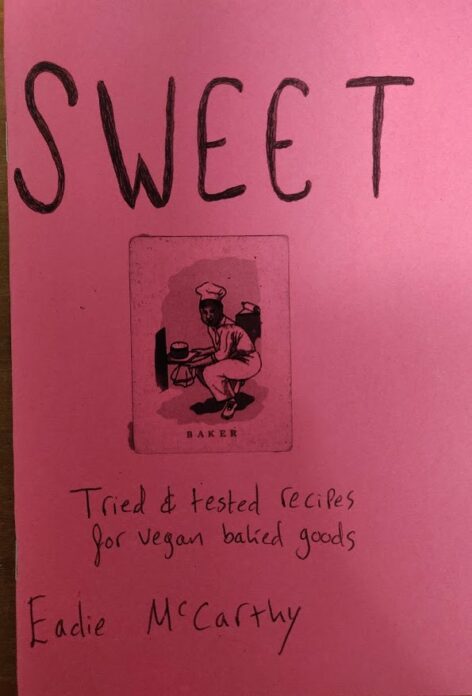Angry Brigade, Documents and Chronology pocketbook
£3.00
A new reprint of this “classic’ from Elephant and Active this time in black!
In stock
Description
Angry Brigade, Documents and Chronology Shows some extent of the armed struggle that was carried out in Britain in the late sixties and early seventies, reproposing the validity of armed attack against capital in all its forms.
Introduction
The eight libertarian militants on trial in the Old Bailey in 1972 who were chosen by the British State to be the `conspirators’ of the Angry Brigade, found themselves facing not only the class enemy with all its instruments of repression, but also the obtusity and incomprehension — when not condemnation — of the organised left.
Described as `mad’, `terrorists’, `adventurists’, or at best authors of `gestures of a worrying desperation’, the Angry Brigade were condemned without any attempt to analyse their actions or to understand what they signified in the general context of the class struggle in course. The means used to justify this were simple: by defining the actions of the Angry Brigade as `terrorist’, and equating this with `individualist’, the movement organisations — whose tendency is to see the relationship between individual and mass as something in contrast — neatly excluded them from their concerns. Strangely enough this attitude was not limited to the broad left but was also prevalent within the anarchist movement, where still today there is a tendency to ignore the role of the individual within the mass, and the role of the specific group within the mass movement. When the question is raised, it is usually in the form of an absolute condemnation. For example, in an article entitled `Terrorism’ (sic) we read: “If a few people take it upon themselves to engage in ‘Armed Struggle’, this spells out for us, besides the usual public hostility, police harassment, arrests and defence campaigns, the loss of all our political lessons, gains and strengths.” (Class War)
The problems encountered by the comrades of the Angry Brigade were similar to those of other groups active at the time who had refused the limits of struggle delineated by the State — the so-called limits of legality, beyond which the repressive mechanism is is unleashed — and taken as their points of reference the level of mass struggle. This decision was in defiance of the State’s definition of the struggle’s confines. It also defied the limits imposed by the official workers’ movement and the extraparliamentary organisations, including the anarchist movement. The Symbionese Liberation Army in the US, the RAF in Germany, the first of the Red Brigades in Italy, were all isolated by the `revolutionary’ organisations, condemned as agitators, provocateurs, individualist terrorists threatening the growth of the mass movement.
On the attitude to the SLA, Martin Sostre was to write in America: “The denunciation of the SLA by the movement press is indistinguishable from that of the ruling class. Each left organisation seems to be competing with the others for their legitimacy by denouncing the SLA…Conspicuously absent from the denunciations is any discussion of the role of armed struggle. Revolutionary violence is seen as something repulsive that should be shunned. The left movement press would have one believe that to overthrow the criminal ruling class we have merely to organise mass movements, demonstrations of protest and repeat revolutionary slogans.”
One such paper in this country — the Trotskyist Red Mole — distinguished itself by calling for solidarity with the comrades accused in the Angry Brigade trial. With the following reservation — “It is no use the organised left criticising the politics of the Angry Brigade, unless we also recognise why a lot of potentially very good comrades reject the various leninist organisations, and indeed resort to bomb-throwing — until you are caught — by itself an easy option that does not deal with the problem of helping to change the political understanding of millions of people.” Understandable enough in view of the Leninist programme. But from the anarchist perspective? We read on the front page of a fairly recent issue of Freedom, “Even the bombing campaign carried out by the Angry Brigade which was technically brilliant…achieved absolutely nothing because, in direct contradiction with their spoken ideals, they were trying to act as an elite vanguard leaving ordinary people as passive spectators of their actions. Far from this resulting in an `awakening’ of the masses’ it resulted in a fear of anarchism and anarchist ideas which has significantly contributed to our current impotence.”
As we can see, the old preoccupation persists: that of protecting the movement (especially the anarchist one) from the `adventurists’.
In fact the movement of the exploited is not and never has been one monolithic mass, all acting together with the same level of awareness. The struggle against capital has from the beginning been characterised by a dichotomy between the official workers’ movement on the one hand, with its various organisations — parties, unions, etc, channelling dissent into a manageable form of quantitive mediation with the bosses. And on the other hand, the often less visible movement of `uncontrollables’ who emerge from time to time in explicit organisational forms, but who often remain anonymous, responding at individual level by sabotage, expropriation, attacks on property, etc, in the irrecuperable logic of insurrection. There is no distinct or fixed dividing line between the two movements. They often affect each other, the surge from the base obliging the big official organisations to take a certain direction, or the inverse, where the latter put a brake on autonomous struggles. Many of those who make up the mass of union membership, are also extremely active in extra-union (and by definition extra-legal) forms of struggle. Each side, however, has its own heritage: on the one a heritage of deals and sell-outs, the great victories that are real defeats on the workers’ backs; on the other, a heritage of direct action, riots, organised insurrections or individual actions which all together form part of the future society we all desire, and without which it would be nothing but a utopian dream.
A brief look at the development of the struggle in this country shows this duality quite clearly. The organised anti-capitalist movement as we know it today began to take shape at the beginning of the nineteenth century. Unlike the other European capitalist countries developing at the same time, there was only a minor communist influence both at organisational and ideological level. Traditional British anti-intellectualism and `common sense’ were perhaps fundamental to a more pragmatic form of organisation which took the form of trades unions. These unions were from the start reformist, although at times, through pressure from the base, some knew insurrectional moments. The changes the unions proposed were however usually intended to come about using non- violent methods within the constitutional limits.
The most numerically significant of the early workers’ movements was the Chartist one, which began around 1838. Recognised as the first modern mass movement, the first Chartist petition had one and a quarter million signatures. This is clearly not a qualitative assessment of active adherents. Even this movement was marked by two opposing currents: on the one hand those preaching non-violence and the constitutional road to universal suffrage as a solution; on the other, those who spoke of ~and carried out) rebellion and armed direct action. These were the so- called `moral force’ and the `physical force’. They were linked to the division between the tradesmen and unskilled workers and were never never reconciled, possibly accounting for the short duration of the movement.
During and immediately preceding this period there also existed forms of autonomous revolt, such as that of the many artisans in the textile industry who, under threat of losing their jobs or of being reduced to non-specialised labourers, organised in armed groups. The most significant of these insurrectional movements was that known as Luddism, which took place between 1810-1820. During this period an immense amount of property was destroyed, including vast numbers of textile frames redesigned to produce inferior, shoddy goods. The Luddites, taking the name of Ned Ludd who had taken a sledge hammer to the frames at hand, organised themselves locally and even federally with great coordination, and in spite of vast deployments of soldiers especially in West Riding and Yorkshire where the movement was strongest, generalised insurrection was approached on more than one occasion. As John Zerzan points out, this was not the despairing outburst of workers having no other outlet, as a long tradition of unionism was in existence among textile workers and others prior to and during the Luddite uprisings.
In the early 1830’s it was the turn of agricultural workers become casual labourers to organise in the `army’ of Captain Swing, a mythical figure adopted as a symbol of the farmworkers who burned ricks and barns, threatening their oppressors — farmers, vicars, justices of the peace alike — with the same fate. Where the Luddites were extremely organised, the Swing men lacked secrecy. Nineteen of them were hanged (sixteen for arson), 644 jailed, and 481 deported to Australia.
Along with the inevitable development in the forces of repression in the form of police and army, we see the development of the unions as an attempt to instill order from within the work situation itself. By their division by trades, and by specialised and non-specialised workers, they had the effect not only of controlling but also of fragmenting the struggle and diffusing it along these artificial divisions. By 1910 there were over 50 unions in the engineering industry alone. The revolutionary movement that subsequently developed began partly as a destruction of the old forms of organisation.
Three important movements developed. The evolutionary syndicalist movement under the French influence; the industrial syndicalists (IWW) from America, and the shop stewards movement, which was particularly active in the Clydeside in Scotland. They struggled for the control of industry by the workers and against the failure of the orthodox trade unions and left parliamentarianism to get any improvement in working conditions. But these movements, although strong at local level, and capable of organising important strikes and revolts, never went beyond the limits of the engineering and transport industries and the mines.
The war years saw a pact between trade unions and the government. Both combined to forcibly instill a sense of patriotism in the workers to prepare them for the great massacre that was to come. Strikes became illegal as a result of this deal, showing clearly how the borderline between legality and illegality is a malleable instrument in the hands of power. Not all went willingly to the slaughter, and the many desertions and mutinies which were savagely put down are still part of the proletariat’s unwritten history.
The Communist Party, formed in 1920 during the post war depression, was authoritarian and centralised. Although the party never gained the support that its continental counterparts did, it nevertheless carried out its role of policing the struggles in course. For example it entered the struggles of the unemployed who were organised in local groups expropriating food, squatting, etc, and channelled them into reformist demands on the State and large demonstrations such as the Jarrow hunger marches.
The General Strike was emblematic of the contrast between the mass of workers and the unions and parties who claimed to represent them.
However, with the recovery and development of heavy industry, the main energies of the exploited were concentrated at the workplace, the only place they now found themselves together. The shop stewards’ movement was revived in the fifties and sixties in the so-called boom years. But, although nearer to the base of the workers, it broke up the area of struggle even further than the already single trades orientated unions. The growing division of labour caused increasing divisions in struggle, with the result that solidarity between the various sectors was limited, even between workers in the same factory.
While the unions were working to develop industry along with the bosses, the base were developing different, uncontrollable forms of struggle such as go- slows, wildcat strikes, sit-ins, etc. For example, of the 421 strikes in the docks at the beginning of the sixties, 410 were unofficial. These same workers had already experienced troops being moved into the docks by a Labour government, and TGWU officials giving evidence against their own members ten years before.
Acceleration in automation, work pace, and alienation, especially in the fast developing car industry, created struggles which went against the union/ management work ethic. Against bargaining and negotiation, car workers and dockers in particular were carrying out sabotage on the assembly lines, wildcat strikes and occupations. At times they succeeded in pushing their `defence’ organisations into situations of attack and across the frontiers of sectionalism and trades differences into which they had been conscripted. But the economism of the unions was one of capital’s strongest arms. At a time when industrial riots and even insurrections were spreading all over Europe, each starting from a minority with its own objectives and spreading to other categories of workers in the same industry, then beyond, using pickets, workers’ committees, assemblies, etc, the unions were the only organs capable of negotiating with the management and getting workers to return to work under great slogans of unity.
This dualism in the workers’ movement between elements of the base struggling directly and spontaneously within a precise economic situation, and the representatives of the national politics of the official workers’ movement always ready to put a brake on and formalise struggles (e.g. boycotts, strikes and even `working to rule’), turning them into instruments of negotiation with the industries, has always existed. But not all the actions of the base can be instrumentalised, and the thrust towards illegality can never be fully stifled. At times it might seem so. But even during the relative `lulls’, there exists a perpetual movement of absenteeists, expropriators, and saboteurs. This movement from below, which emerged in force at the end of the sixties, dispelled the myth of the passive, stable English working class, just as the image of the traditional worker changed with the increase in the number of women and immigrant workers in productive work and the rapidly expanding service industries.
At the same time a new movement was growing in the schools and colleges. One of the main points of reference for this movement was the Vietnam war. In every college and university various groups were struggling for political space. For a period there was an attempt to form a unified students movement, the Revolutionary Students Federation. The most significant groups were of a Trotskyist tendency, Maoism having little influence in this country. But the sterile politics of the straight left (Trotskyists and other Leninists) could not contain the new anti-authoritarian movement that was beginning to develop.
The politics of everyday life — organising around one’s own oppression, trying to overcome the division between workers and students, between men and women, forming groups around precise problems as opposed to under political banners — was in full development. A vast movement of claimants, squatters, feminists, etc, emerged expressing not the Right to Work but the Refusal of Work, not employing the waiting tactics of unionist education but taking, Here and Now, what was being refused, and refusing what was being offered. A critique of the nuclear family as a firm bastion of capitalist power led to many experiences of communal living. This movement in all its complexity, not so much a students movement, but a widespread one comprising of young workers, students and unemployed, could be called the libertarian movement of the time.
This movement was comprised of autonomous groups acting outside the stagnant atmosphere of the traditional anarchist movement with its own microscopic power centres which, as Bakunin so astutely pointed out, are just as nefarious as any other power structure. A parallel can therefore be drawn between the dichotomy within the workers movement, and that which exists within the anarchist movement. On the one hand there are the comrades who hold positions of power, not carrying out any precise activity to contribute to the revolutionary consciousness of the mass, but who spend their time presiding over meetings and conferences aimed at influencing younger comrades through the incantation of abstract principles. These principles are upheld as the only true tenets of anarchism, and are adhered to by those who, either by laziness or weakness, accept them acritically. The manifestations of these islands of power usually take the form of publications that are long standing and repetitive. They have the external semblance of an `open forum’ for the use of the movement as a whole, but the basic ideology — that of conservation and stasis — is filtered through from behind the flurry of `helpers’ carrying out the task of `filling’ and physically producing the publication. These publications are the first to condemn autonomous actions that take their points of reference from the illegal movement of the exploited. They are the first to denounce them, accusing them of bringing police repression down on the anarchist movement. In their reveries they have forgotten that repression always exists, and that only in its most sophisticated form creates the peaceful graveyard of acquiescence, where only ghosts are allowed to tread. Many of the most forceful of recent social rebellions have been fired and spread by the popular response to police repression.
The traditional anarchist movement finds itself threatened therefore by the other movement of anarchists, the autonomous groups and individuals who base their actions on a critical appraisal of past methods and up to date theory and analysis. They too use the traditional instruments of leaflets, newspapers and other publications, but use them as tools of revolutionary critique and information, trying always to go towards the mass struggle and contribute to it personally and methodologically. It is quite coherent — and necessary if they are to be active participants in the struggle — that they also apply the instruments of direct action and armed struggle. These groups refuse the logic of the power centre and ‘voluntary helpers’. Each individual is responsible for his or her action which is based on decisions reached through the endless task of acquiring information and understanding. Some of this can also be gained from
the older or more experienced comrades in the group, but never as something to be revered and passed down acritically. Just as there are no immovable boundaries between the two workers’ movements, nor are there within the two anarchist movements. Nor is there a fixed boundary between the latter anarchist movement and the insurrectionalist workers’ movement. When the struggle heightens these movements come close together and intermingle, the anarchists however always with the aim of pushing the struggle to a revolutionary conclusion and offering libertarian methods to prevent its being taken over by authoritarian structures. The other, traditional, anarchist movement has shown all too often in the past its willingness to form alliances with structures of the official workers’ movement.
Given the situation at the end of the sixties and beginning of the seventies, with its wave of industrial unrest at the level of the base, the students’ struggles in the universities, the struggles of the unemployed, women and so on, the Angry Brigade emerge both as a product of this reality, and as revolutionary subjects acting within it. To reject them as some form of social deviance is to close one’s eyes to the reality of the struggle at that time. The fact that their actions deliberately took place in the field of illegality, soliciting others to do the same, does not in any way disqualify them from what was in its very essence an illegal movement. It is possible to see this even in the context of the bombings alone that took place in these years (although by doing so we do not intend to reduce the vast and varied instruments of illegality to that of the bomb): Major Yallop, head of the Laboratories at Woolwich Arsenal, main witness for the prosecution in the trial of the supposed Angry Brigade, was forced to admit that in addition to the 25 bombings between 1968 and mid 1971 attributed to them, another 1,075 had come through his laboratory.
Looking at the bombings claimed by the Angry Brigade, we see that they focus on two areas of struggle that were highly sensitive at the time. The first was the struggle in industry: the bombing of the Dept. of Employment and Productivity on the day of a large demonstration against the Industrial Relations Bill; the bombing of Carr’s house on the day of an even larger demonstration; the bombing of William Batty’s home during a Ford strike at Dagenham; the bombing of John Davies’, Minister of Trade and Industry, during the Upper Clyde Shipbuilders crisis; the bombing of Bryant’s home during a strike at one of his building works. To complement these attacks, there were the bombs aimed directly at the repressive apparatus of the State at a time when repression was increasing heavily in response to the upsurge in all areas of struggle. The bombing of the home of Commissioner Waldron, head of Scotland Yard. The bombing of the police computer at Tintagel House; the home of Attorney General Peter Rawlinson, and, finally, that of a Territorial Army Recruitment Centre just after internment was introduced in Northern Ireland fall into this category. The bombing of the high street boutique, Biba’s and that of the BBC van the night before the Miss World contest was an attempt to push further in the direction of destroying the stereotyping and alienation of the spectacle of consumerism and role playing. “Sit in the drugstore, look distant, empty, bored, drinking some tasteless coffee? or perhaps BLOW IT UP OR BURN IT DOWN.” (Communique 8)
By their actions the Angry Brigade also became a part of that spectacle, but a part that took form in order to contribute to its destruction. Their actions as presented here find a place therefore not as some old commodity to be taken out and dusted, then put back on the shelf like a relic that belongs to the past. The work they carried out — and which five libertarians paid for in heavy prison sentences — is a contribution to the ongoing struggle which is changing form as the strategies of capital change in order for it to restructure and preserve itself. A critical evaluation of the Angry Brigade must therefore take place elsewhere than on the sterile pages of this pamphlet. It must take place in the active considerations of a movement that has a task to fulfil, and that does not take heed of the condemnation and defamation by those whose ultimate aim is to protect themselves. Many problems are raised by a rereading of the actions and experiences of the Angry Brigade — clandestinity or not, symbolic action or direct attack, anonymous actions or the use of communiques to be transmitted by the media — to name but a few. The pages that follow help to highlight these questions, whose solution will only be found in the concrete field of the struggle.
Jean Weir





